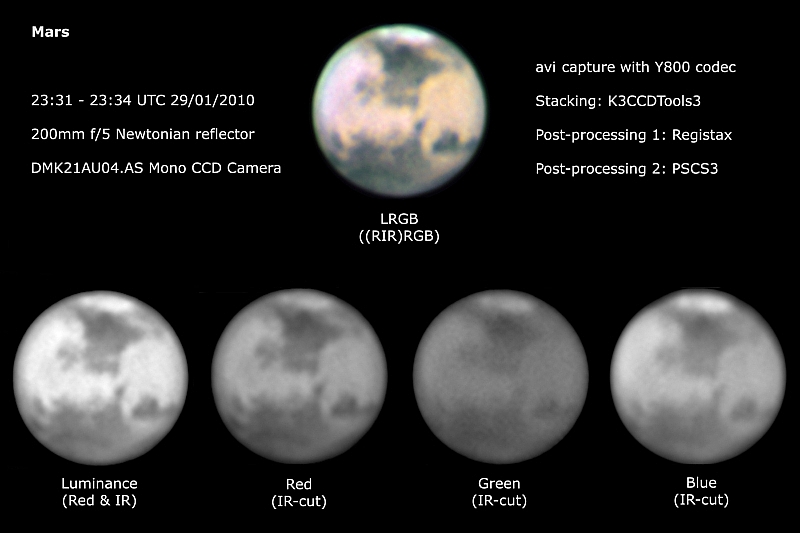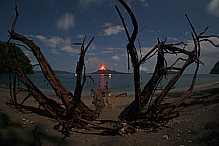The original plan was to observe Mars on the 27th, the night of its closest approach to Earth (the closest approach distance was 0.664 AU (99.33 million km), giving Mars an apparent diameter of 14.105") but the skies were cloudy so the deal was off. Instead, I had to be content with observing just after opposition on the 29th when the skies were nice and clear, the reflected light-pollution was minimal and the seeing was good. The only downside was that the Moon was almost full and visually quite close to Mars, so the sky wasn't as dark as usual. It was damned cold here, but I wasn't about to let the falling temperatures get in the way of seeing Mars at such close quarters.
Before opening the obsy roof I had to put the fan-heater on for a few minutes to warm up the mount as it had been iced-up for a couple of days and it doesn't like starting in the cold (ice in the gears isn't a good thing). After that it was a doddle, except for the frost that formed on everything unheated. The scope was soon pointing at Mars and I cranked-up the new camera.
This time I was trying something different - using RGB filters and a mono camera. This meant grabbing filtered avi data-runs for each of the three colour-channels and another for the luminance-channel... all within a four(ish)-minute period so as to minimise any image-blurring due to Mars' rotation. After a few failed attempts I managed to get the suss on it, and after that the data-sets were quite easy to get, if a tad rushed.
Soon it was time to move on. I had a good look at the Moon but didn't think it merited any camera-work, as the surface-contrast was low due to the face-on illumination. Still, it was fun trying to find the Apollo landing areas. Next time out I might try for some images of them, just for the hell of it.
After an hour indoors to warm up, I went back out and slewed the scope around to Saturn. This time the rings were more open so I grabbed some filtered avi data, but yet again it didn't turn out well due to the planet being so low above the horizon. I'll probably process the data anyway, but if they're crap I'll just bin 'em.
After another hour or so of watching Saturn the temperature had fallen to -7C. The mount was struggling, no doubt due to the cold thickening the grease inside, so I ended the session, closed the obsy roof and put the fan-heater back on to get rid of the ice.
Anyway, this is the result:
Not bad for my first attempt at this method, eh?
Again, you'll have to wait for me to find time to process the Saturn data.






Stef, I am looking forward to you explaining what this all means in plain English this weekend.....
Plain English, eh?
Best done before we hit the pub, I reckon.